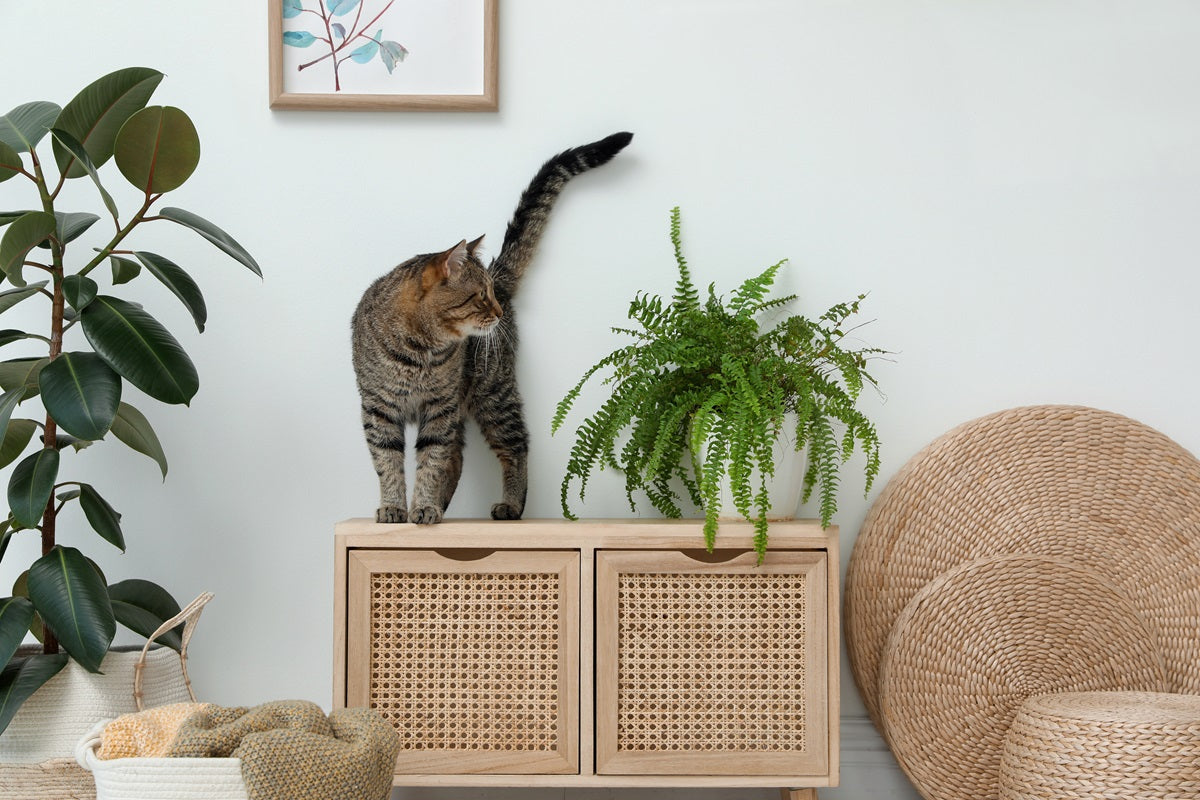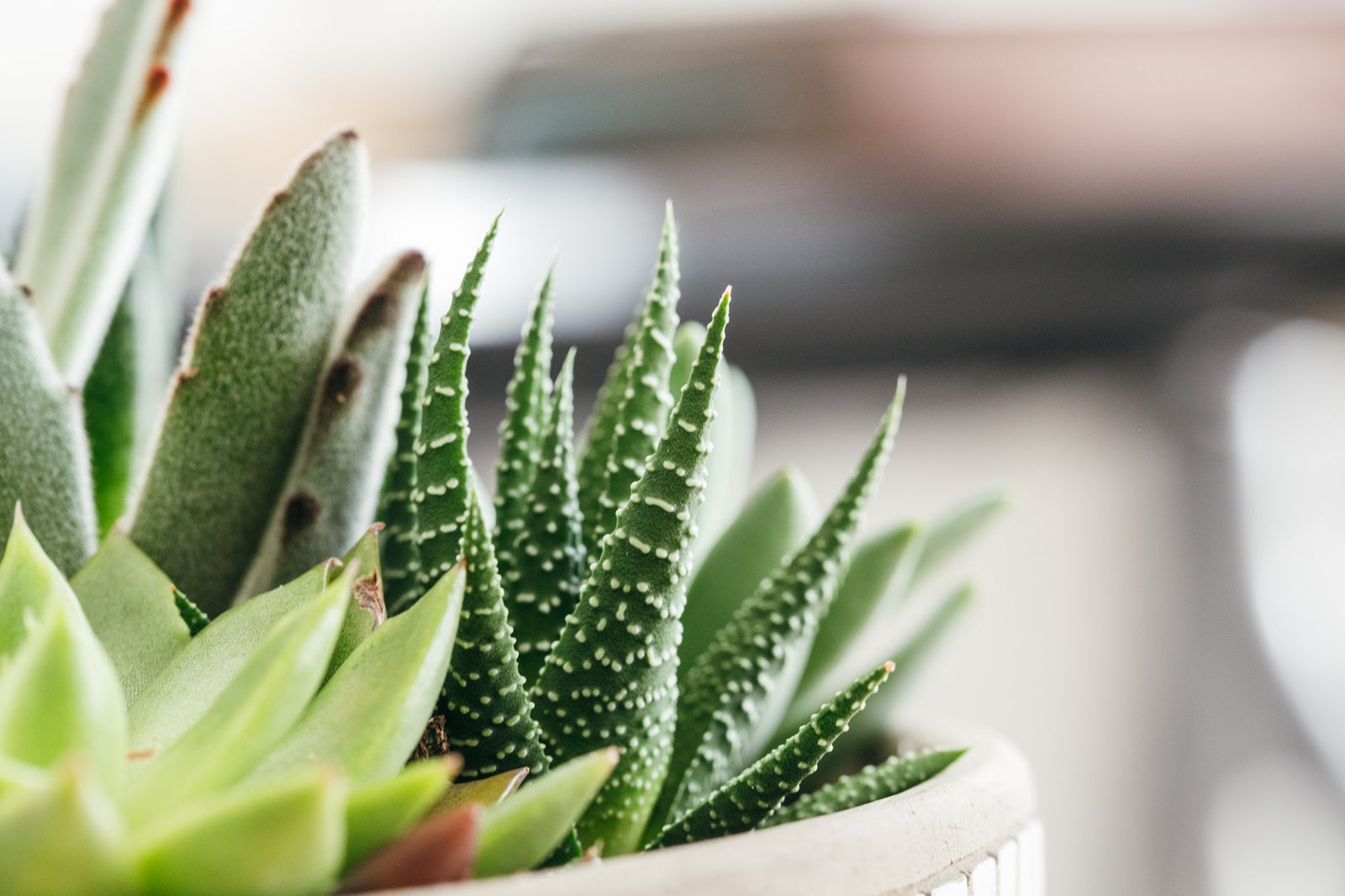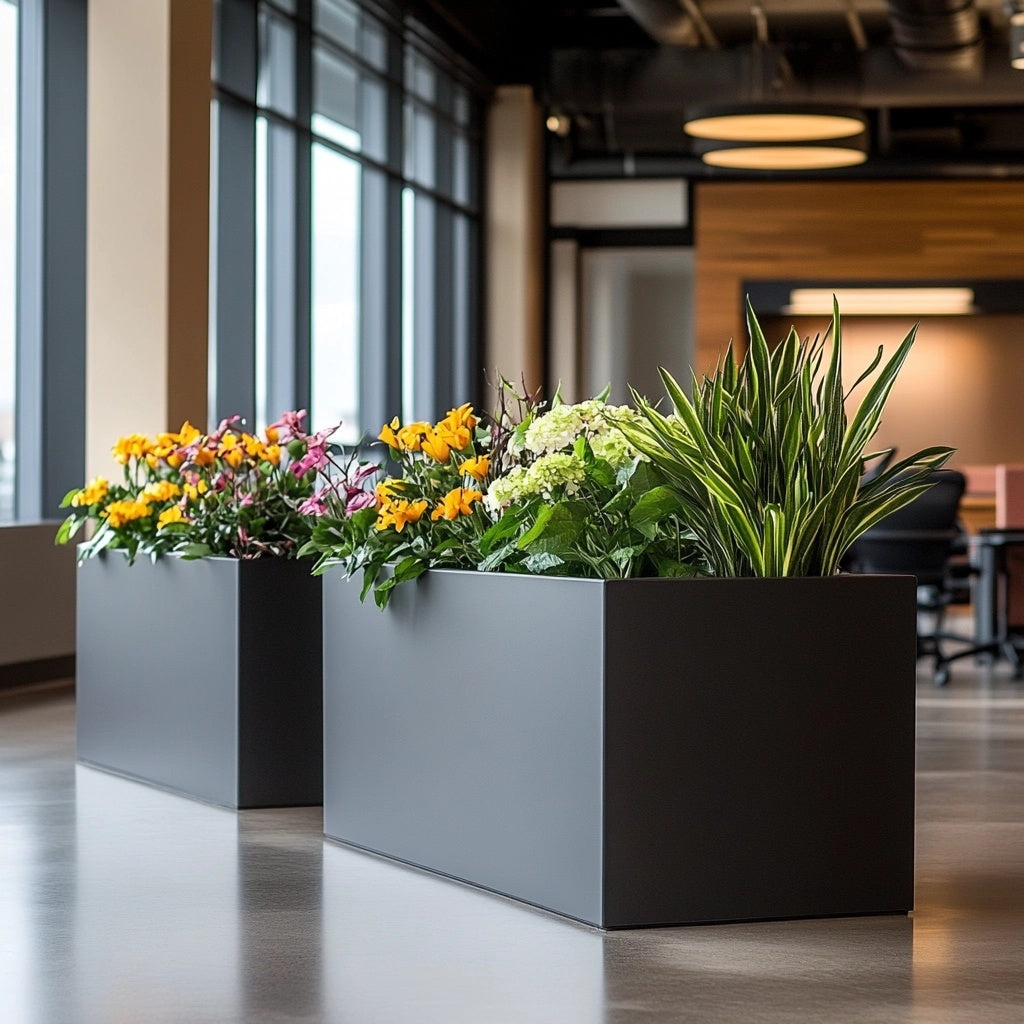Indoor plants have become increasingly popular for their ability to enhance the aesthetic appeal of living spaces while offering numerous health benefits. Beyond their decorative value, plants play a crucial role in improving air quality, reducing stress, and boosting overall well-being. However, when living with pets, it's essential to prioritize selecting non-toxic house plants that are safe for cats and dogs.
In this article, we will explore a variety of low-maintenance indoor plants that are non-toxic to both cats and dogs. By choosing these pet-friendly options, you can create a lush and inviting home environment without compromising the safety of your furry friends.
Benefits of Indoor Plants
Plants for indoor use offer a multitude of benefits for both your physical and mental health. They can help to improve air quality, enhance the aesthetic appeal of your living space, and boost your overall well-being.
Air purification
One of the most significant benefits of indoor plants is their ability to purify the air. Plants naturally filter pollutants from the air, removing harmful toxins such as formaldehyde, benzene, and trichloroethylene.
This can be particularly beneficial for individuals with respiratory issues or allergies, as improved air quality can help to reduce symptoms and improve overall breathing.
Aesthetic appeal
Indoor plants can also add a touch of nature to your living space, creating a more visually appealing and relaxing atmosphere. They can help to break up large, empty spaces, add depth to your interior design, and create a sense of calm and tranquility.
Studies have shown that spending time in nature can reduce stress and anxiety, and indoor plants can help to bring a sense of the outdoors into your home.
Mental health benefits
In addition to their air-purifying and aesthetic benefits, indoor plants can also have a positive impact on your mental health. Studies have shown that interacting with plants can reduce stress, anxiety, and depression. The presence of greenery can also help to improve mood and overall well-being. Spending time caring for plants can also provide a sense of accomplishment and satisfaction.
Criteria for Selecting Safe Indoor Plants for Cats and Dogs
When choosing indoor plants for your home, it's crucial to consider the following criteria:
Non-toxic to pets
Many common houseplants can be harmful or even fatal if ingested by cats or dogs. It's crucial to research pet-safe plants and avoid those that contain toxins.
Some of the most common toxic plants for pets include lilies, oleander, and cast iron plants. By selecting non-toxic plants, you can create a safe and inviting environment for your pets.
Low maintenance
Indoor plants require regular care to thrive, but opting for low-maintenance varieties can make it easier to maintain a healthy and vibrant indoor garden.
Low-maintenance plants generally require less frequent watering, pruning, and fertilization. This is especially beneficial for busy individuals or those who may not have extensive gardening experience.
Adaptability to indoor conditions
Consider the lighting conditions and humidity levels in your home when selecting plants. Some plants prefer bright, indirect light, while others can tolerate low-light conditions.
Additionally, certain plants thrive in humid environments, while others prefer drier conditions. By choosing plants that are well-suited to your home's environment, you can increase their chances of survival and minimize the need for excessive care.
Top 10 Low Maintenance and Non Toxic Indoor Plants
So what are the best dog and cat friendly plants (indoor)? Check out these 10 low light indoor plants safe for cats and dogs:
1. Areca Palm (Dypsis lutescens)

This elegant palm tree, with its slender, feather-like fronds, adds a touch of the tropics to any indoor space. Its graceful appearance and low-maintenance nature make it a popular choice for home and office environments.
- Light Requirements: Prefers bright, indirect light. Avoid placing it in direct sunlight, as this can scorch the leaves.
- Watering Needs: Moderate watering; allow the soil to dry slightly between waterings. Avoid overwatering, as this can lead to root rot.
- Benefits: The Areca Palm improves air quality, regulates humidity, and adds a touch of greenery to any space.
- Care Tips: Keep humidity high by misting regularly or using a pebble tray. Fertilize once a month during the growing season with a balanced liquid fertilizer.
2. Boston Fern (Nephrolepis exaltata)

A classic fern with delicate, feathery fronds, the Boston Fern brings a sense of tranquility and elegance to any room. Its cascading growth habit and lush green foliage create a soothing atmosphere.
- Light Requirements: Thrives in bright, indirect light. Avoid placing it in direct sunlight, as this can burn the leaves.
- Watering Needs: Requires regular watering; keep the soil moist but not soggy. Check the soil moisture regularly and water when the top inch is dry.
- Benefits: The Boston Fern purifies the air, reduces noise pollution, and adds humidity.
- Care Tips: Increase humidity by misting regularly or placing the plant on a pebble tray filled with water. Fertilize once a month during the growing season with a balanced liquid fertilizer.
3. Calathea

Known for their vibrant colors and intricate patterns, Calathea plants are a striking addition to any home. Their unique foliage, often featuring stripes, polka dots, or geometric designs, can add a touch of personality to any space. A small planter with a glazed finish would enhance the vibrant colors of Calathea foliage.
- Light Requirements: Prefers indirect light; avoid direct sunlight. Too much direct sunlight can cause the leaves to fade or become scorched.
- Watering Needs: Moderate watering; allow the soil to dry slightly between waterings. Avoid overwatering, as this can lead to root rot. Use lukewarm water to water Calathea plants, as cold water can shock the roots.
- Benefits: Calathea plants reduce stress, improve mood, and add a pop of color to any space.
- Care Tips: Avoid overwatering, as this can lead to root rot. Keep humidity high by misting regularly or using a humidifier.
4. Haworthia

These succulent plants, with their thick, fleshy leaves and rosette-like growth habit, offer a miniature desert landscape in a pot. Their hardy nature and low-maintenance requirements make them ideal for beginners.
- Light Requirements: Prefers bright, indirect light. However, they can also tolerate low-light conditions.
- Watering Needs: Low-maintenance; allow the soil to dry completely between waterings. Overwatering is a common problem with Haworthias, so it's important to let the soil dry out completely before watering again.
- Benefits: Haworthia succulents are low-maintenance, thrive in low light, and add a touch of texture to any room.
- Care Tips: Avoid overwatering, as this can lead to root rot. Fertilize once a month during the growing season with a balanced succulent fertilizer.
5. Money Tree (Pachira aquatica)

Believed to bring good luck and prosperity, the Money Tree is a popular houseplant with its braided trunks and glossy green leaves. Its unique appearance and ease of care make it a popular choice for those seeking a touch of the exotic.
- Light Requirements: Prefers bright, indirect light. Avoid placing it in direct sunlight, as this can burn the leaves.
- Watering Needs: Moderate watering; allow the soil to dry slightly between waterings. Avoid overwatering, as this can lead to root rot.
- Benefits: The Money Tree is known for its ability to remove toxins from the air, such as benzene and formaldehyde.
- Care Tips: Avoid overwatering, as this can lead to root rot. Fertilize once a month during the growing season with a balanced liquid fertilizer.
6. Peperomia

A diverse genus of plants with a wide variety of leaf shapes, sizes, and colors, Peperomia offers endless possibilities for creative displays. It can be placed almost anywhere in your home, from bathrooms and kitchens to balcony spaces.
- Light Requirements: Can tolerate low light conditions, but prefers bright, indirect light.
- Watering Needs: Low-maintenance; allow the soil to dry completely between waterings. Overwatering is a common problem with Peperomia plants, so it's important to let the soil dry out completely before watering again.
- Benefits: Peperomia plants are relatively tolerant of different light conditions and watering schedules, making them easy to care for.
- Care Tips: Avoid overwatering, as this can lead to root rot. Fertilize once a month during the growing season with a balanced liquid fertilizer.
7. Phalaenopsis Orchid

With its large, showy flowers and elegant appearance, the Phalaenopsis Orchid is a popular choice for orchid enthusiasts. Its long-lasting blooms and relatively easy care make it a rewarding addition to any collection.
- Light Requirements: Flourishes in bright, indirect light, but you need to avoid exposing it to direct sunlight to prevent leaf burn.
- Watering Needs: Moderate watering; allow the soil to dry slightly between waterings. Use lukewarm water to water orchids, as cold water can shock the roots.
- Benefits: Orchids in general are known for their ability to remove toxins from the air, including benzene and formaldehyde.
- Care Tips: Use orchid potting mix and water by immersing the pot in water. Fertilize once a month during the growing season with a balanced orchid fertilizer.
8. Pilea

Known for their unique leaf shapes and patterns, Pilea plants are a charming addition to any home. From the popular Pilea peperomioides with its coin-shaped leaves to the vibrant Pilea involucrata with its colorful foliage, there's a Pilea to suit every style.
- Light Requirements: Does well in bright, indirect light; direct sunlight is too intense for its leaves.
- Watering Needs: Moderate watering; allow the soil to dry slightly between waterings. Avoid overwatering, as this can lead to root rot.
- Benefits: In addition to their beauty, Pilea plants can also help to improve air quality by removing toxins from the air.
- Care Tips: Avoid overwatering, as this can lead to root rot. Fertilize once a month during the growing season with a balanced liquid fertilizer.
9. Parlor Palm (Chamaedorea elegans)

This elegant palm tree, with its slender, feather-like fronds, adds a touch of the tropics to any indoor space. Its graceful appearance and low-maintenance nature make it a popular choice for home and office environments.
- Light Requirements: Prefers a location with bright, indirect light; direct sunlight can be detrimental to its health.
- Watering Needs: Moderate watering; allow the soil to dry slightly between waterings. Avoid overwatering, as this can lead to root rot.
- Benefits: The Parlor Palm helps to increase humidity levels in your home, which can be beneficial for skin health and respiratory comfort.
- Care Tips: Keep humidity high by misting regularly or using a pebble tray. Fertilize once a month during the growing season with a balanced liquid fertilizer.
10. Fittonia

With its vibrant foliage in shades of green, pink, and red, Fittonia plants add a splash of color to any room. Their low-growing habit and dense foliage make them ideal for ground covers or as a focal point in terrariums.
- Light Requirements: Grows best in a location with ample, indirect light. Direct sunlight can be harmful to its leaves.
- Watering Needs: Moderate watering; allow the soil to dry slightly between waterings. Avoid overwatering, as this can lead to root rot.
- Benefits: The vibrant colors and patterns of Fittonia plants can help to reduce stress and improve mood.
- Care Tips: Avoid overwatering, as this can lead to root rot. Keep humidity high by misting regularly or using a pebble tray.
Plant Care Tips
To ensure the health and longevity of your indoor plants, it's important to provide them with proper care. This includes attention to watering, lighting, fertilization, and pruning, as well as addressing common plant problems.
- Watering and Soil: Proper watering is essential for the health of your indoor plants. Use a well-draining potting mix and water only when the top inch of soil is dry. A table can be provided to outline the watering frequency for each plant.
- Lighting: Ensure that your plants receive the appropriate amount of light. Some plants prefer bright, indirect light, while others can tolerate low light conditions, for example, in spaces with no windows.
- Fertilization and Pruning: Fertilize your plants regularly during the growing season to provide essential nutrients. Pruning can help to maintain shape and promote growth.
- Common Problems and Solutions: Be aware of common plant problems, such as pests, yellowing leaves, and overwatering. Identify the causes and take appropriate action to resolve these issues.
Low Light Plants Safe for Cats and Dogs - The Bottom Line
By incorporating pet-safe, low-maintenance indoor plants into your home, you can create a healthier, more vibrant, and more inviting environment for both yourself and your furry friends. These plants offer numerous benefits, including improved air quality, reduced stress, and enhanced aesthetic appeal.
Remember to choose plants that are non-toxic to your pets and that are well-suited to your home's lighting and humidity conditions. With a little care and attention, you can enjoy the beauty and benefits of indoor plants while ensuring the safety and well-being of your animals.






















Jack —
Thank you for this article!